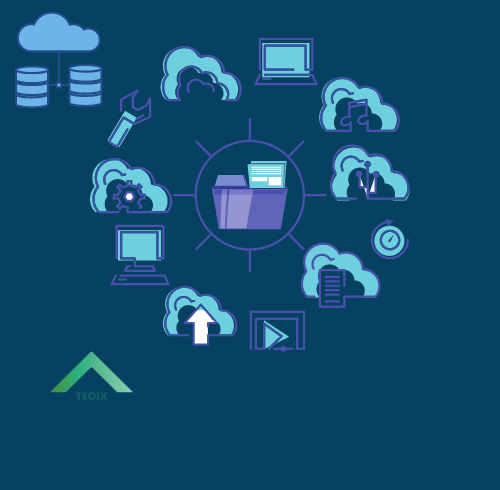How cloud computing works
CLOUD COMPUTING
5/11/20242 min read


Our digital world has become completely dependent on cloud computing, which has completely changed how we handle, store, and access data and apps. Fundamentally, cloud computing is the internet-based provision of computer services, including networking, servers, storage, databases, software, and more, at a reasonable price that can be utilized by both individuals and enterprises.
Here's a quick rundown of how cloud computing functions:
Facilities:
Data centers, which hold enormous arrays of servers, storage systems, networking gear, and other technology, are the foundation of cloud computing. Cloud service companies such as Microsoft Azure, Google Cloud Platform, and Amazon Web Services (AWS) run and maintain these data centers.
Virtualization:
Virtualization technology, which makes it possible to create virtual instances of computing resources, is a major component of cloud computing. A single physical server can be partitioned into several virtual servers, each running a separate operating system and set of programs, using virtualization. This makes it possible to scale resources up or down as needed and to use resources efficiently.
Service Models:
To meet diverse needs, cloud computing provides a range of service models, including:
Virtualized computer resources, including virtual computers, storage, and networking, are made available over the internet by Infrastructure as a Service (IaaS).
With Platform as a Service (PaaS), developers may create, implement, and maintain applications without having to worry about the supporting infrastructure because it provides a comprehensive cloud-based development and deployment environment.
Software as a Service (SaaS) removes the need for users to install, maintain, and update software locally by delivering software applications via the internet on a subscription basis.
Deployment Models:
A variety of deployment models are also provided by cloud computing.
Public Cloud:
Services are made available to anybody who wishes to use or pay for them via the public internet.
Private Cloud:
Services and infrastructure are provided for a single company and are usually hosted by a third party or on-site.
Hybrid Cloud:
Data and apps can be shared between public and private clouds thanks to the hybrid cloud's combination of both features.
Access and Management:
Using safe authentication techniques, users can access cloud computing services and resources via web browsers or specialized applications. Cloud service providers provide tools and management interfaces that let users effectively provision, monitor, and manage their resources.
Elasticity and Scalability:
One of the main benefits of cloud computing is its capacity to dynamically scale resources in response to demand. Cloud services ensure maximum performance and cost-effectiveness by automatically adjusting computer capacity to handle workload changes or traffic spikes.
Security and Compliance:
To guard against illegal access, data breaches, and other security concerns, cloud providers put strong security measures in place. To guarantee data privacy and regulatory compliance, they also abide by a number of compliance standards and laws.
To sum up, cloud computing is a potent paradigm that has revolutionized our relationship and usage of technology. Cloud computing, which makes use of virtualization and the internet, provides unmatched flexibility, scalability, and efficiency, enabling businesses and individuals to innovate and prosper in the digital era.


